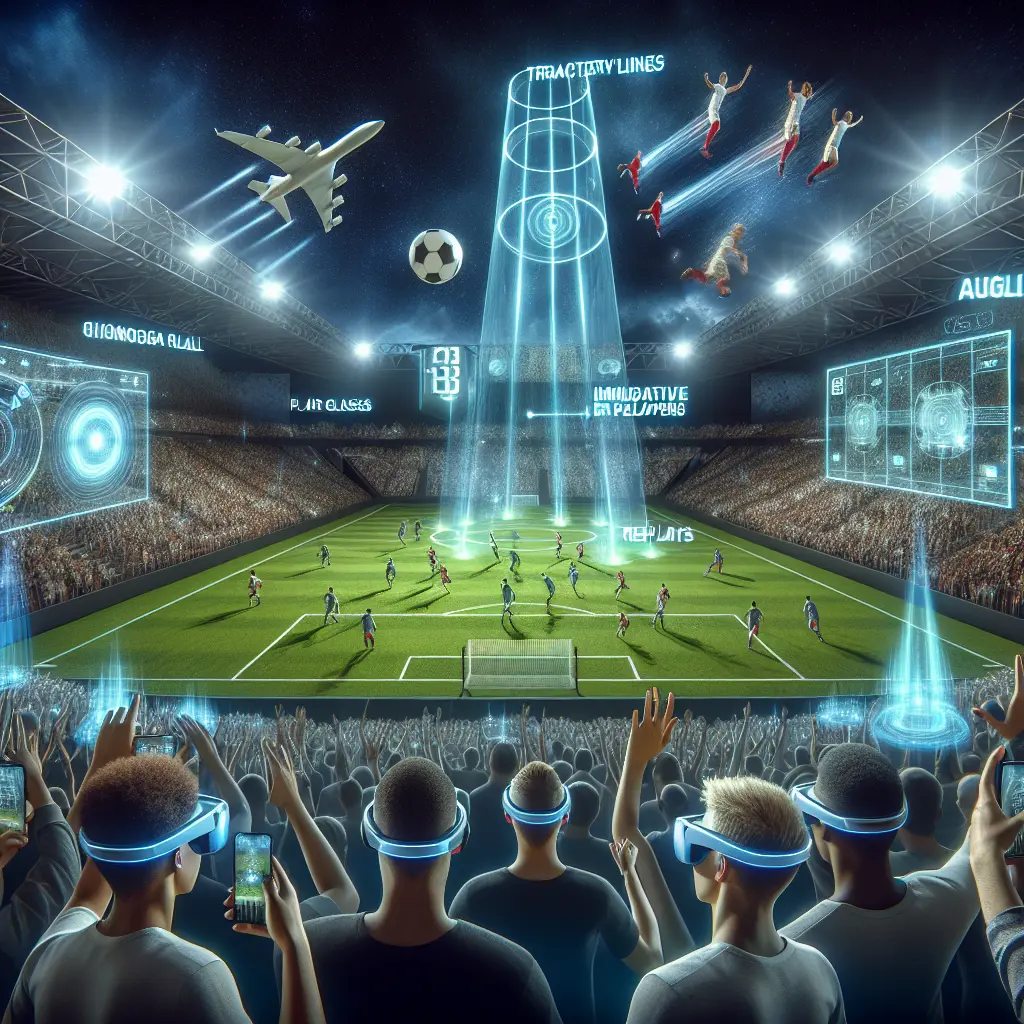In the ever-evolving landscape of sports media technology, Augmented Reality (AR) is emerging as a game-changer, revolutionizing how fans engage with their favorite sports. As AR innovation in sports continues to break new ground, it's crafting immersive sports experiences that captivate and enthrall audiences worldwide. Gone are the days when spectators were limited to watching games from a distance; now, AR fan engagement transforms traditional viewing into an interactive, dynamic experience that brings fans closer to the action than ever before.
From virtual sports viewing to live sports events augmented reality applications, AR in media is redefining digital fan engagement by offering unparalleled opportunities for AR fan interaction. Sports technology trends show a growing demand for more personalized and engaging content, pushing the boundaries of how sports broadcasts are enhanced with AR. These advancements offer fans an augmented reality fan experience that transcends conventional sports entertainment, providing interactive sports media that feels both futuristic and accessible.
As sports AR technology continues to evolve, the potential for augmented reality applications in sports is vast. Whether through innovative AR sports marketing strategies or enhancing the fan experience in sports arenas, AR is setting the stage for a future of sports media that promises greater involvement and excitement. As we delve deeper into this transformative era, it becomes evident that AR is not just a fleeting trend but a fundamental shift towards more engaging and immersive experiences. This exploration into AR's impact on sports opens the door to a new dimension of fan experiences, ready to be unveiled in the following sections.
The integration of Augmented Reality (AR) in sports has transformed how fans engage with their favorite teams and events. This innovative technology offers a plethora of opportunities for AR fan engagement, creating immersive sports experiences that blend the physical and digital worlds. With the rise of sports AR technology, the traditional boundaries of spectating are being redefined, promising a more interactive and dynamic fan experience.
One of the most notable applications of AR in media is in virtual sports viewing. This technology allows fans to experience games from angles and perspectives previously unimaginable. Imagine watching a live basketball game where you can choose to view the action from the perspective of your favorite player or even see detailed statistics overlaying the court in real-time. Such immersive sports experiences are now possible due to advancements in augmented reality applications in sports.
Augmented Reality in Sports: Enhancing Fan Engagement
Recent sports technology trends indicate a significant shift towards personalized content, with digital fan engagement at the forefront. Platforms are increasingly offering customizable options where viewers can select what additional information they want to see, be it player statistics, historical performance data, or tactical insights. This level of personalization enhances sports broadcasts with AR, making them more relevant and engaging for individual viewers.
AR fan interaction is not limited to home viewing; it is also revolutionizing live sports events. Many stadiums are now integrating AR technology to enhance the fan experience in sports arenas. For instance, by using AR-enabled devices or apps, fans can access real-time player stats, replays, and even interactive games while watching the event live.
A case study from the NFL highlights how AR innovation in sports is used to create interactive sports media during games. The league introduced an app allowing fans to point their smartphones at the field, instantly bringing up player stats and visualizing plays as they happen. Such applications not only increase engagement but also deepen fans' understanding and enjoyment of the game.
Beyond enhancing viewing experiences, augmented reality fan experiences are also shaping sports marketing strategies. Brands are leveraging AR to create interactive advertisements that engage fans directly. For example, a sports apparel company might use AR to allow fans to virtually try on team jerseys before purchasing them. This kind of AR sports entertainment turns marketing into an engaging activity rather than a passive experience.
The Future of Sports Media with AR
Furthermore, AR sports marketing is being used to create unique experiences that build brand loyalty. Campaigns involving AR scavenger hunts or exclusive content unlocked via AR interactions have proven successful in capturing fan attention and driving engagement.
As we look towards the future of sports media, it's clear that AR will play a pivotal role in shaping how fans interact with sports content. The ongoing development of AR technology promises even more sophisticated augmented reality applications in sports, such as holographic replays or virtual meet-and-greets with players.
However, challenges remain in terms of accessibility and technology adoption. As highlighted in a recent systematic review and meta-analysis conducted by researchers from Plos.org, while virtual reality has shown efficacy in rehabilitation scenarios, widespread adoption for general consumer use still faces hurdles related to cost and technology readiness.
Despite these challenges, the trajectory of AR in sports media technology is unmistakably upward. As advancements continue, fans can expect even more immersive experiences that blur the lines between reality and fantasy, making every game an unforgettable event.
In conclusion, augmented reality (AR) is rapidly transforming the sports industry, offering fans unparalleled ways to engage with their favorite teams and events. The key takeaways from our discussion highlight the vast potential of AR in enhancing fan experiences:






Leave a Comment